It's amazing how much traffic is on the road heading in to the capital,Banjul, at this time of the morning. Once you clear this part of the country though there is very little on the roads at all but I wouldn't contemplate a self drive, too many obstacles to overcome as you'll find out if you read on!
Our first stop was at a place we had previously visited. Well known as a possibility for the Brown-necked Parrot.
Sure enough we had a fly past.
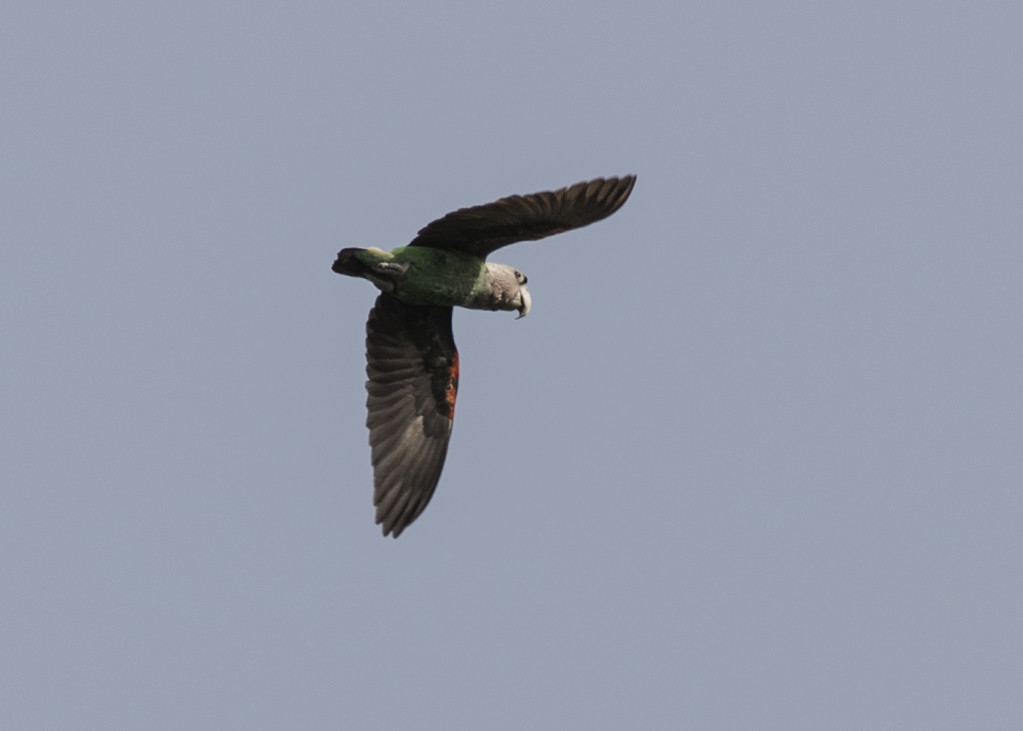
High in the sky we also had a Beaudoin's Snake Eagle patrolling the skies.
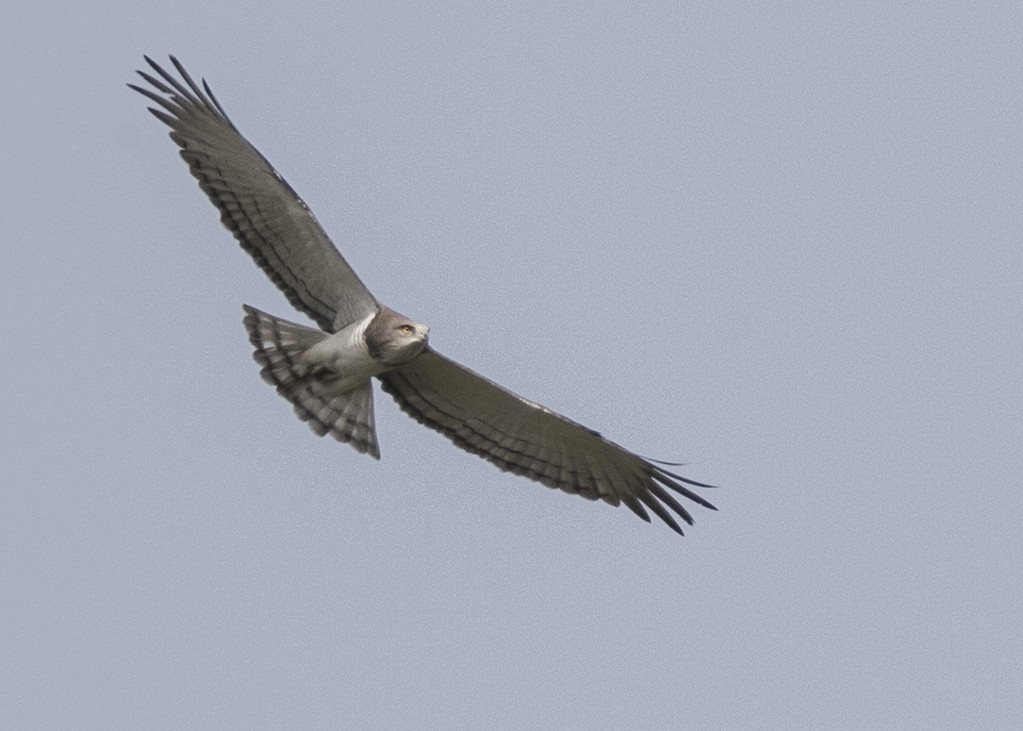
I needed to use a 2.0x teleconverter on my 500mm lens to get something usable. This was to be a regular feature of the whole trip as most of the subjects were either small or at a distance. The problem with that sort of magnification is that it also suffers from atmospheric distortion, especially in hot conditions, and boy, it was hot! Regularly over 35 degrees.
With not a lot more to see we moved on a little and tried our luck on a bush track.
Bingo. Levaillant's Cuckoo. A lifer for Alan.
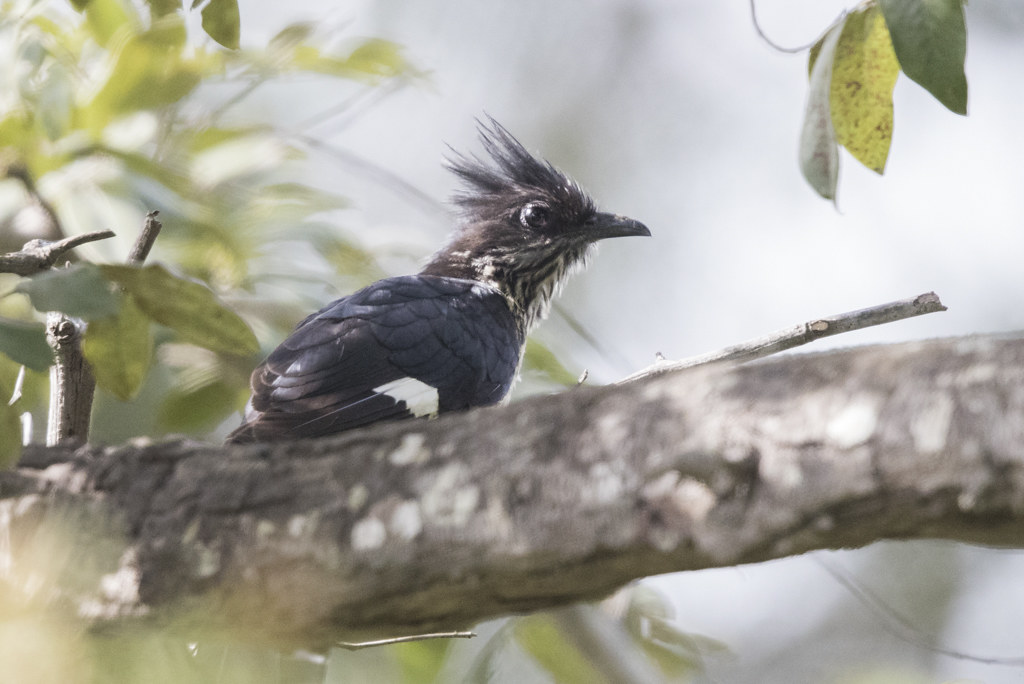
The shot was taken through the car window leaning over Alan !
Annoyingly the bird then turned around!
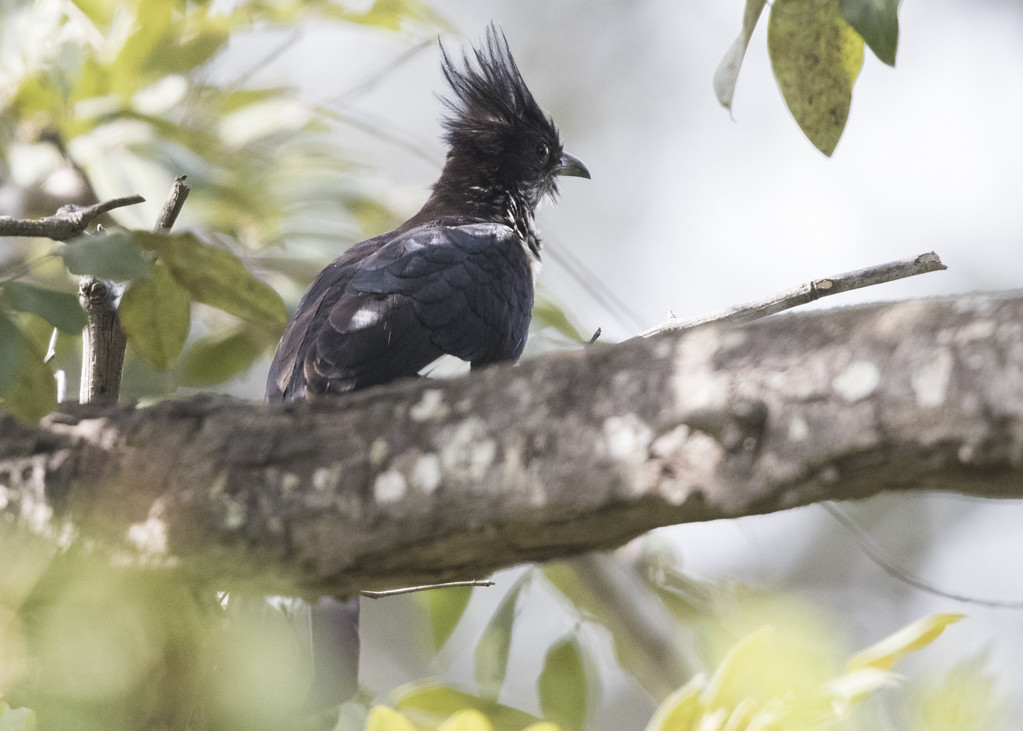
and just when you thought you would crack it, it only went and sat in a position obscured by a leaf!
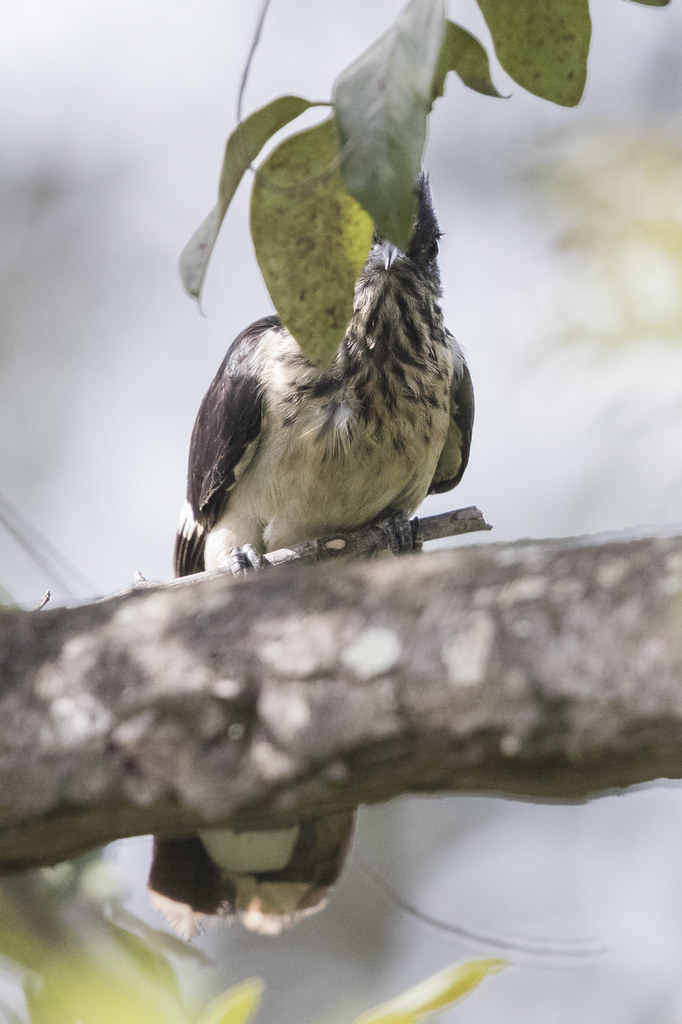
Then of course it flew!
We carried on our drive to our next stop where in the past we had had some good views of raptors over a small pond area.
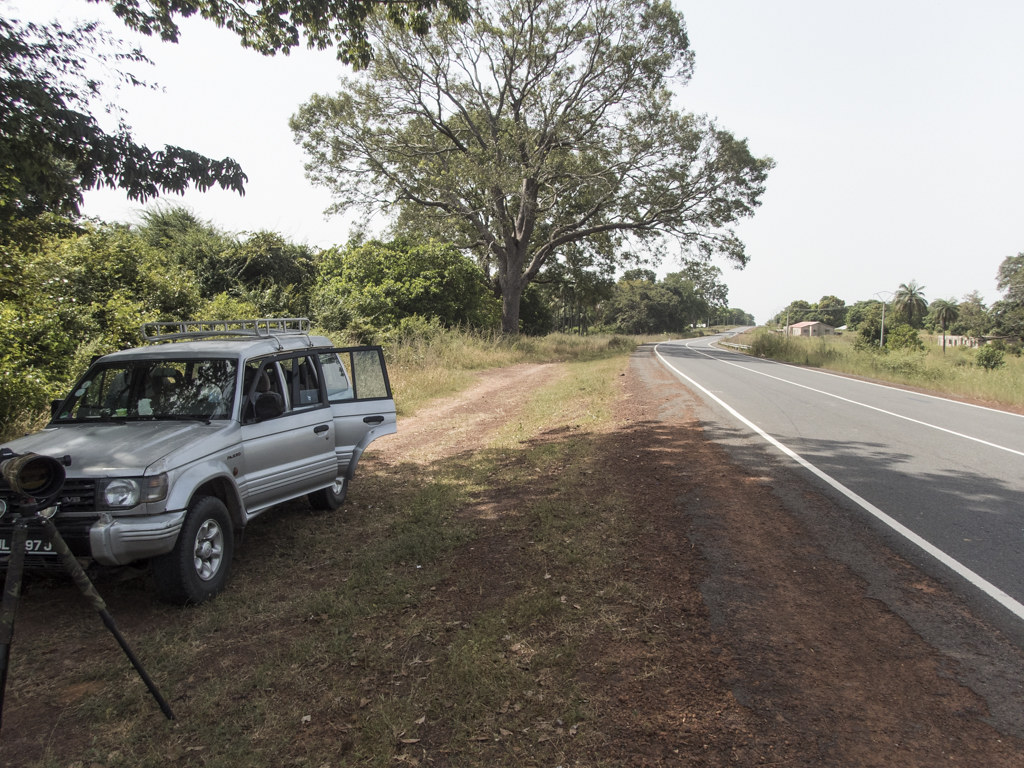
As you can see the main highway is a splendid tarmac'd road of excellent quality. We enjoyed a cold drink from the cool box before going in search of some target species. Just like last time they were there but the views were not nearly as good.
The Grasshopper Buzzard wasn't in the mood for allowing a close approach.
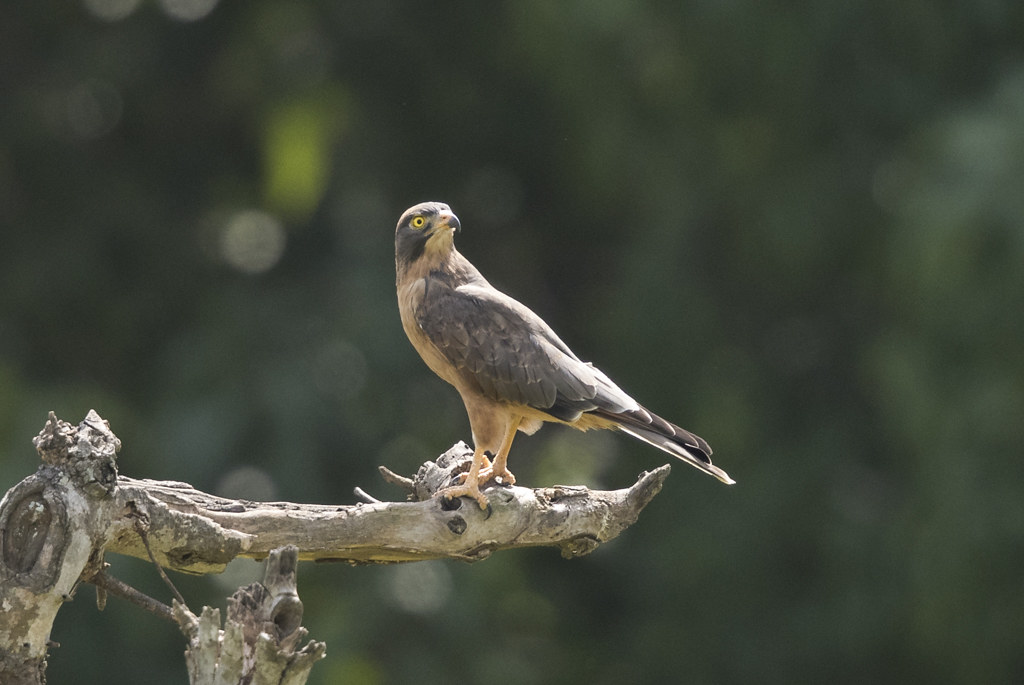
An African Harrier Hawk took refuge in a tall palm tree not too far away.
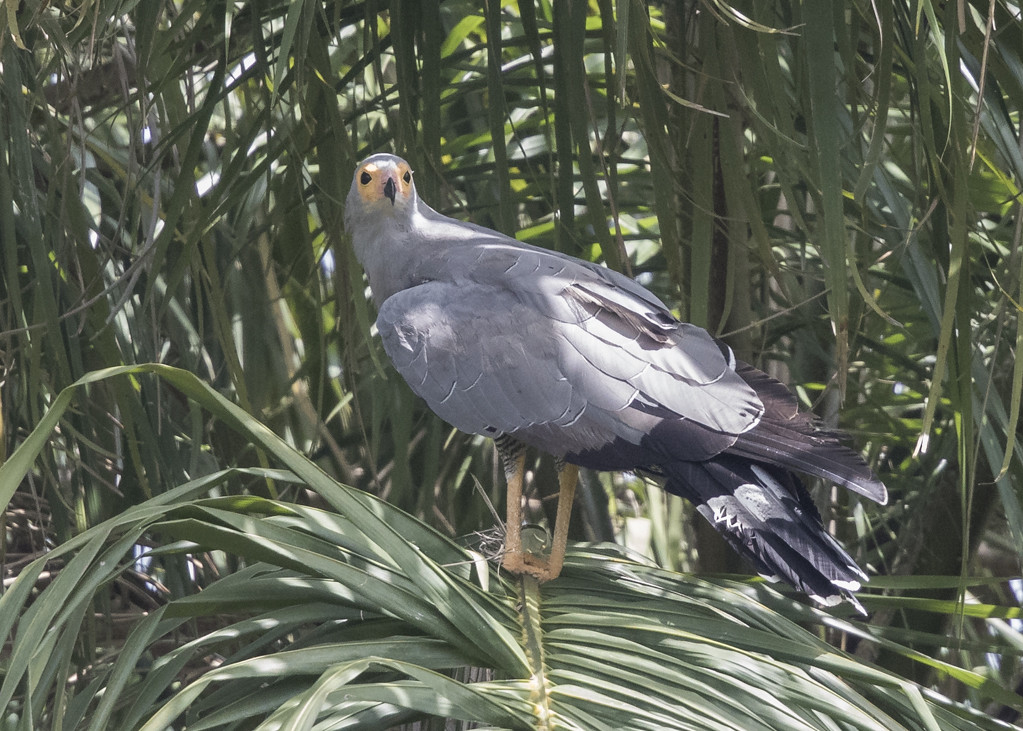
Another Levaillant's Cuckoo was seen but too difficult to photograph, all a bit of a disappointment really.
My friend Alan has acquired a few new toys since we travelled last, a Canon 7D2 and 100-400mm lens. His need for some opportunities was probably greater than mine on subjects we had previously seen, he has certainly embraced his new photographic hobby with enthusiasm!
Besides deciding to choose early November to try and see the Egyptian Plovers further up river, it's also the time to try and catch a photograph of the Bishops still in breeding plumage. They were playing hard to get whenever we stopped by the roadside but eventually I got lucky.
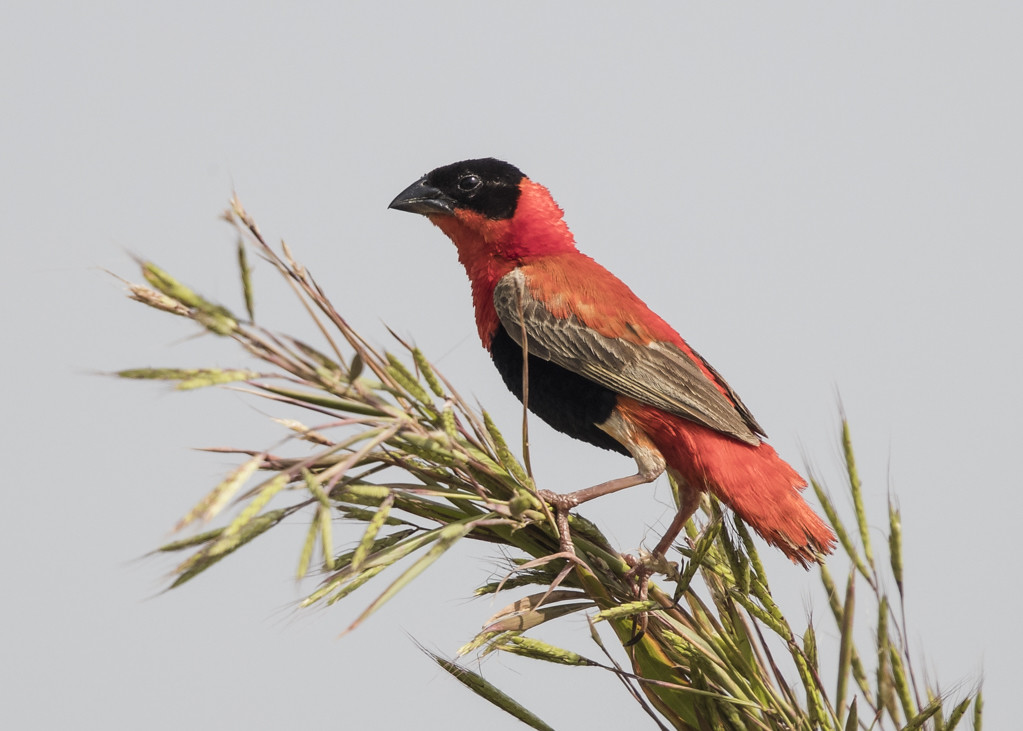
By early afternoon we had arrived at Tendaba Camp, a journey of around 140 kms. We had had a rather disappointing journey from a photographic point of view but had managed to add a few sightings to our tick list. I don't normally bother too much with counting species but when I'm with someone who does I enjoy the challenge of beating a target. On our last visit we had managed a total of 250 species we had both seen, at the moment we were way behind.
Those who have been to Tendaba Camp will recognise the warnings on the approach road.
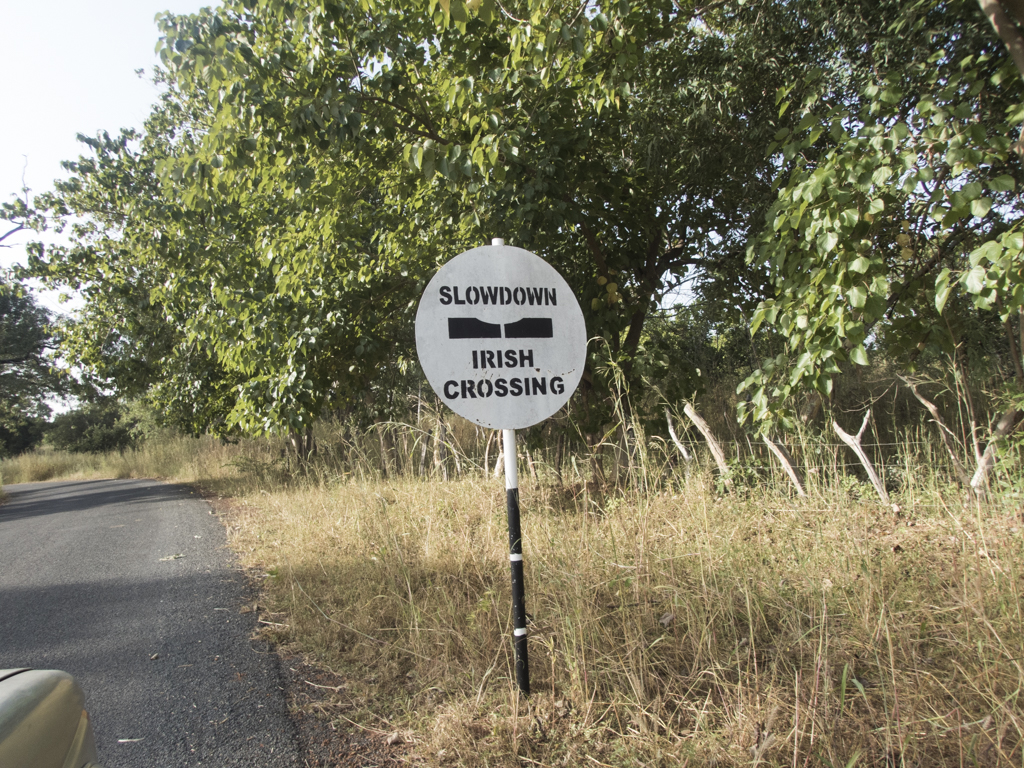
It's the only place in the world I have seen them and that includes Ireland. They are deep dips in the road that serve as flood drainage I think. You can guess as to why they are so called, I have my own ideas no longer politically correct.
Entering Tendaba you are greeted by the signage that you are welcome to The Gambia's premier safari camp. Currently it's undergoing major building work and was unrecognisable on the river front where attempts are being made build river defences, reclaim the river mud banks and create a beach area in the process.
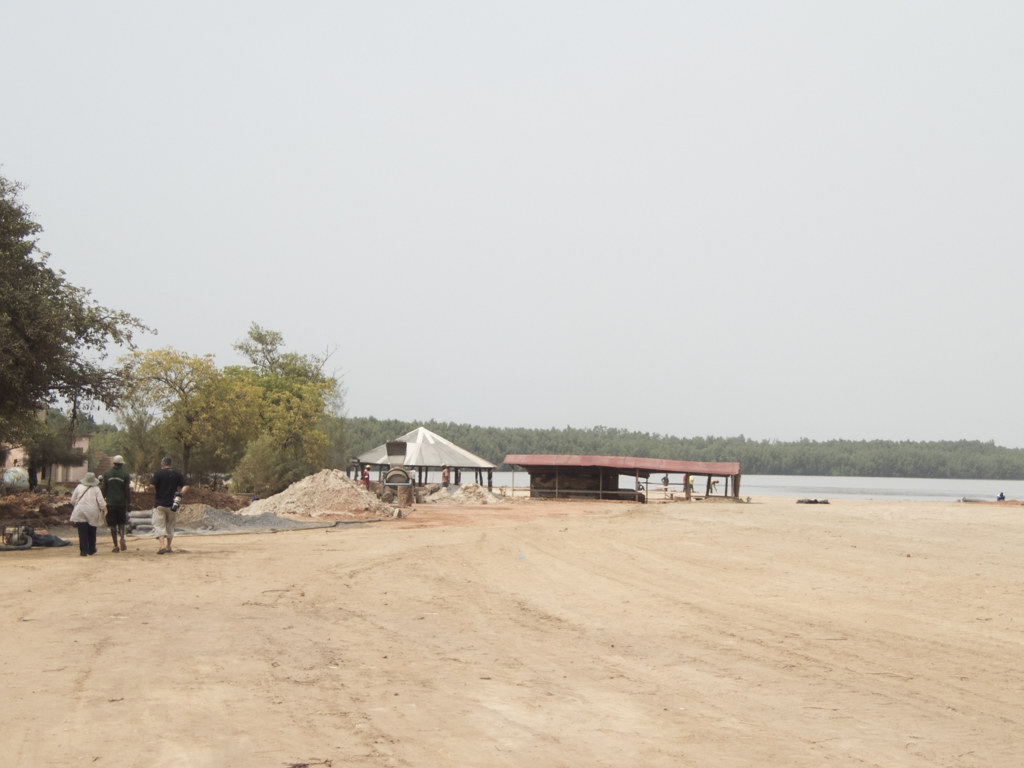
The old landing stage and some buildings such as the bar have gone.
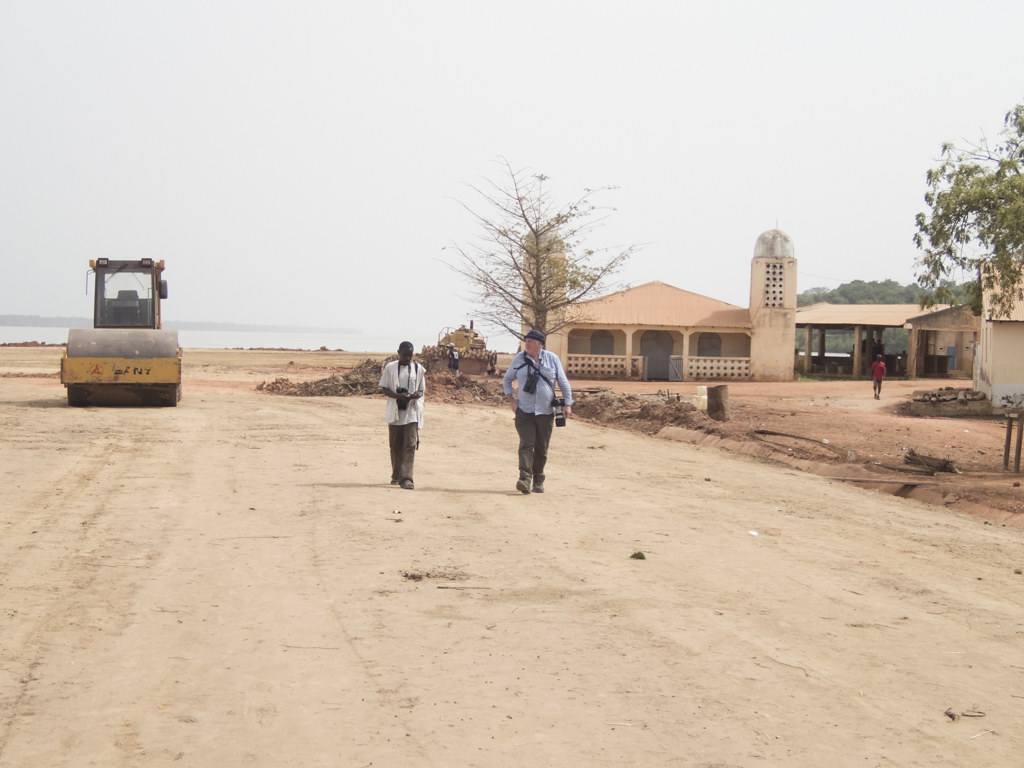
The place at the moment is pretty charmless to be honest.
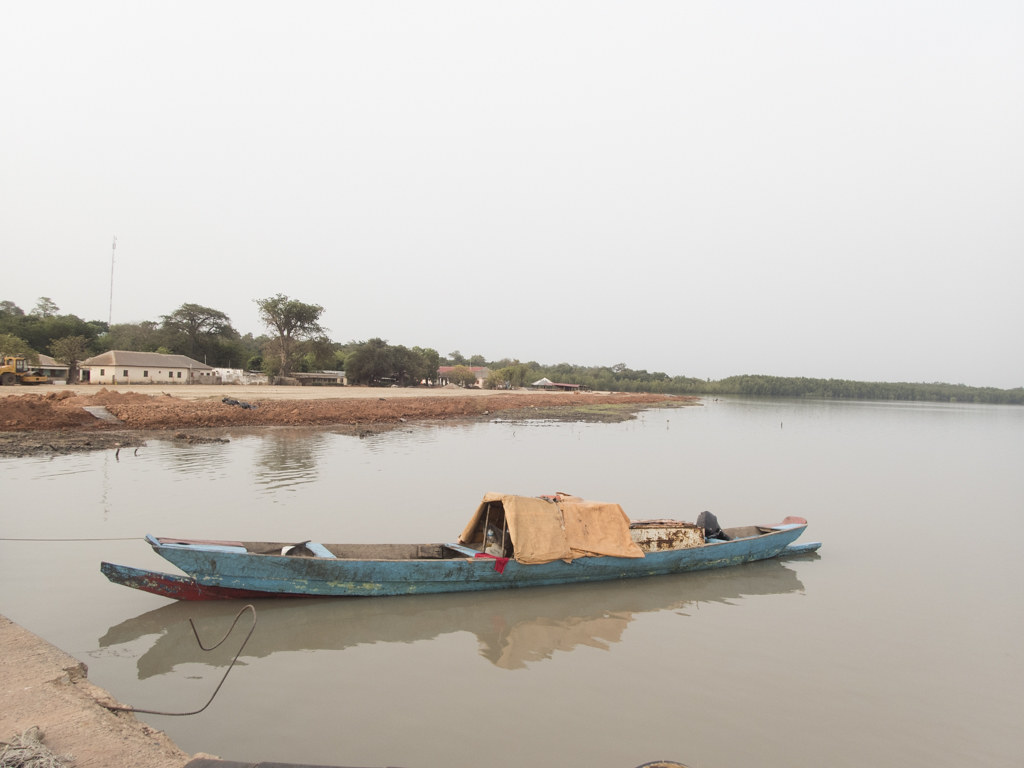
Hopefully when everything is finished it will be a different story but somehow I doubt it.
These accommodation blocks have been here years now and are still in an unfinished state, in fact they are getting slowly worse.
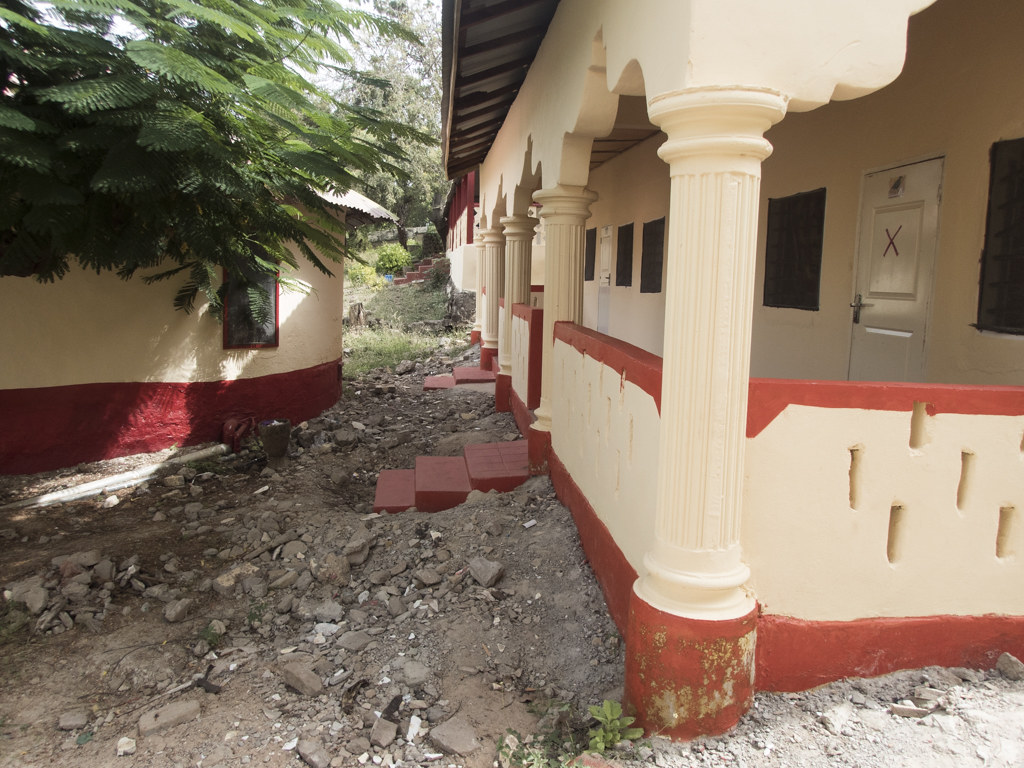
Whilst they are currently building extra accommodation maybe they should think about renovating the existing buildings first. They are basic to say the least.
My bed!
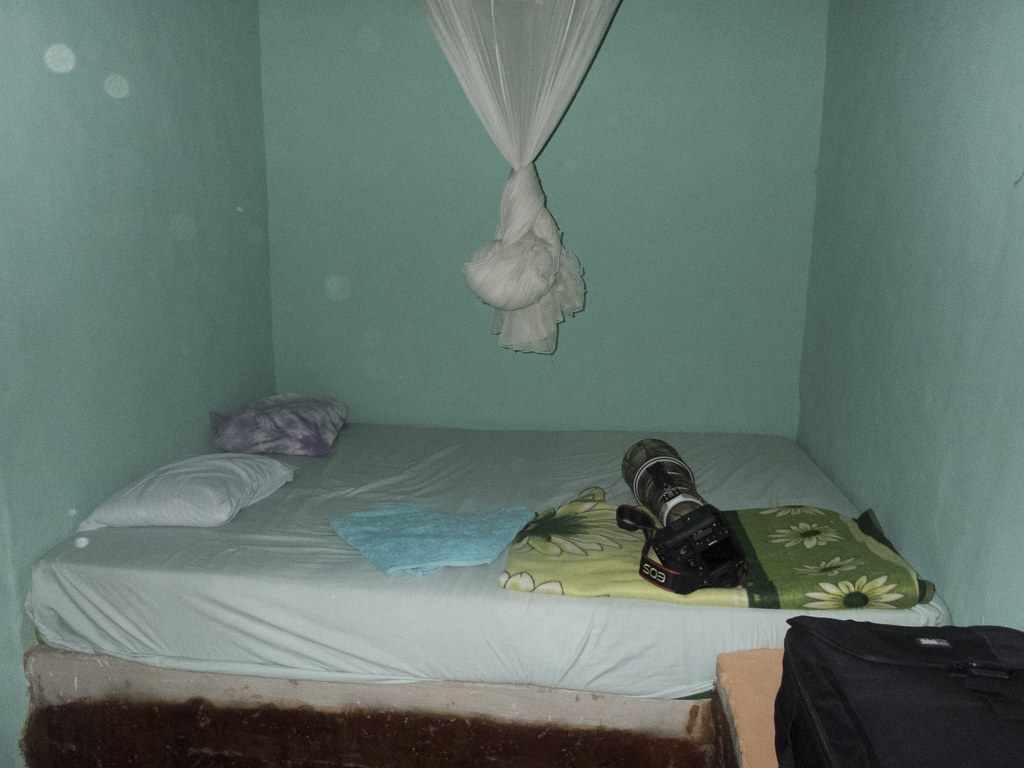
I had no working lights on arrival but that was at least fixed in the bedroom area before it went dark. En suite facilities remained in darkness which maybe isn't a bad thing, and it was so hot a cold shower wasn't too much to put up with either. However, the fan in the next room to mine making a racket all night due to worn bearings was a real annoyance.
The communal dining area has had a major renovation to floor and roof but the food was worse than I remember but the most heinous crime was warm beer!
We had two nights of this with a further one on the way back too!
Ah well, the pursuit of speciality species doesn't always come easily!
The good news was that they have built a photographic hide nearby and my guide was anxious to take a look. As the heat died down we took a walk to investigate it. Advertised as 450m away it's probably twice that distance, passing through the local school grounds on the way.
At last a half decent photo opportunity when I spotted a grey Hornbill fly down on to the football pitch.
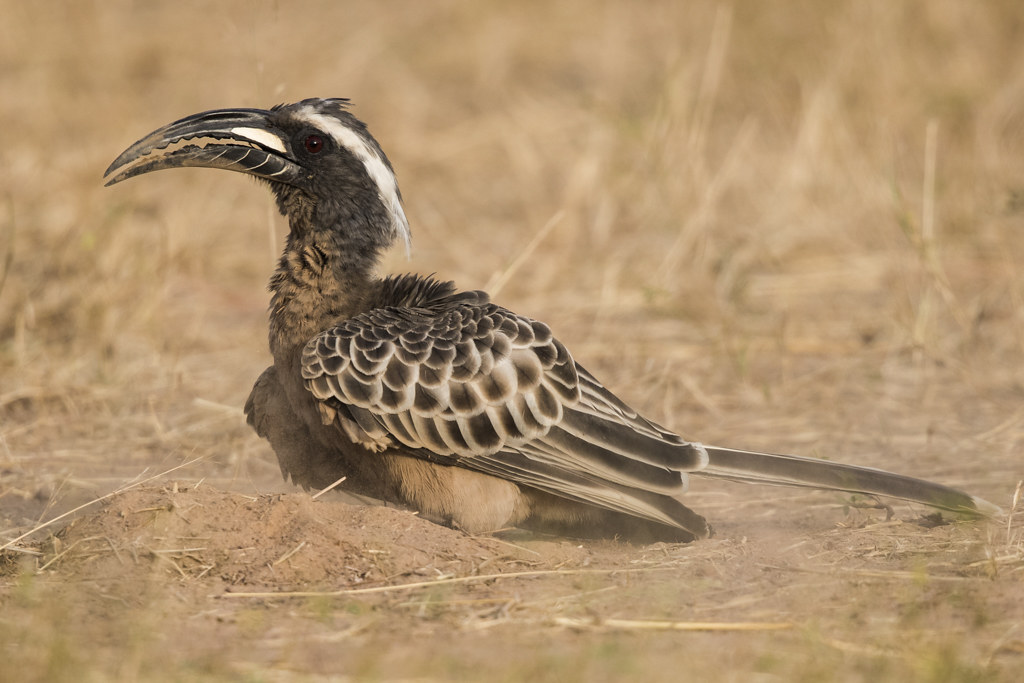
It was having bath!
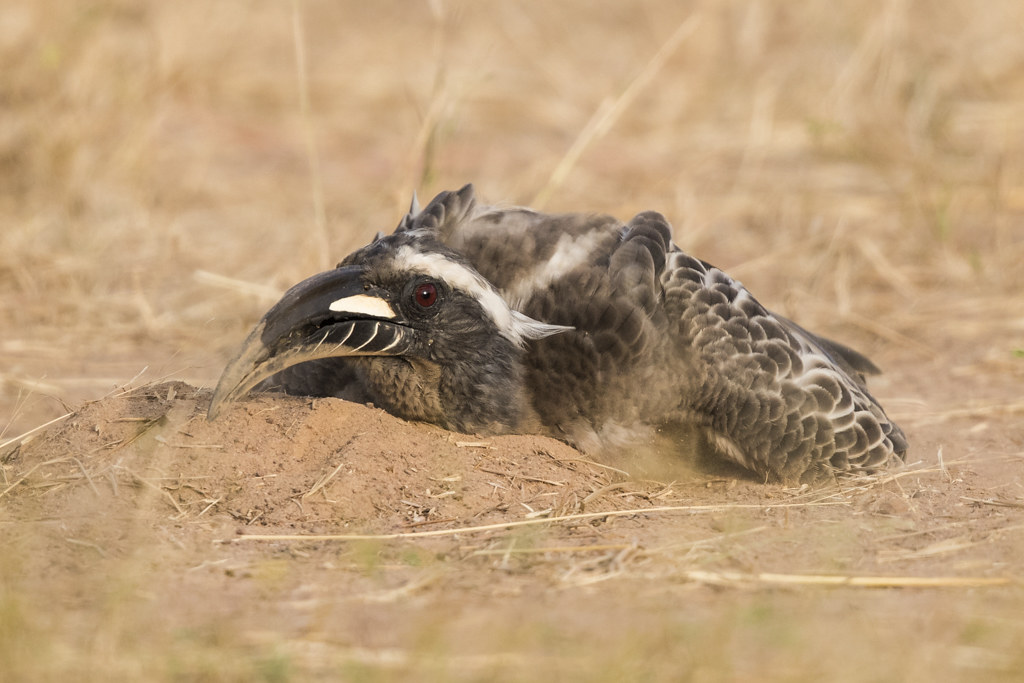
Unfortunately, a dust bath doesn't leave you looking at your best!
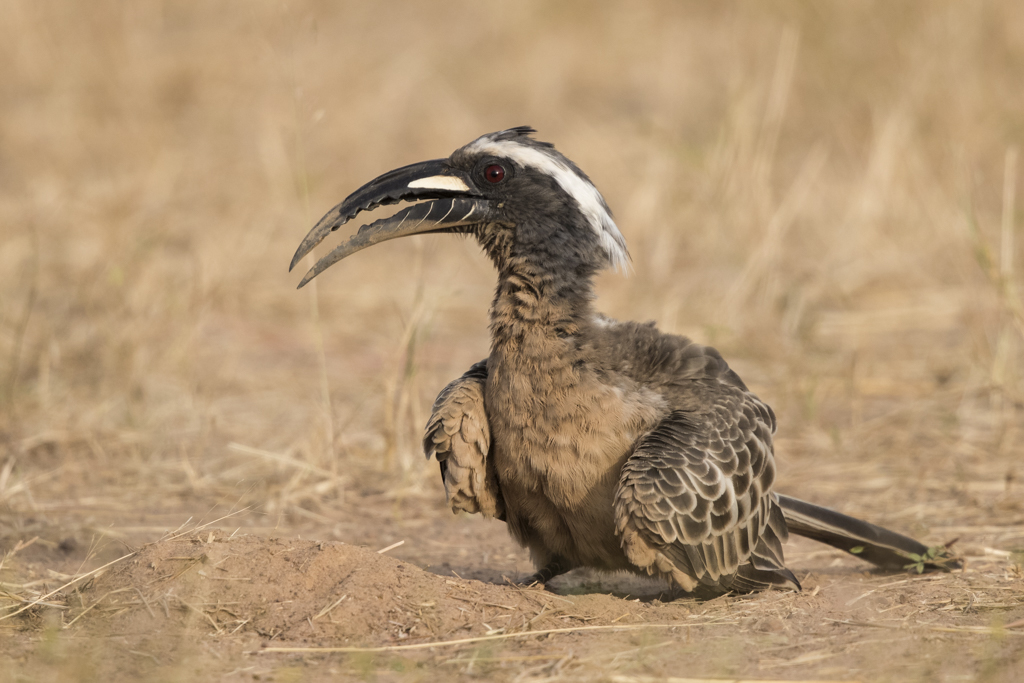
Still, it was a nice little session, my first sense of achievement all day.
This was quickly followed by a sighting of a Bearded Barbet, a species I wanted a decent shot of.
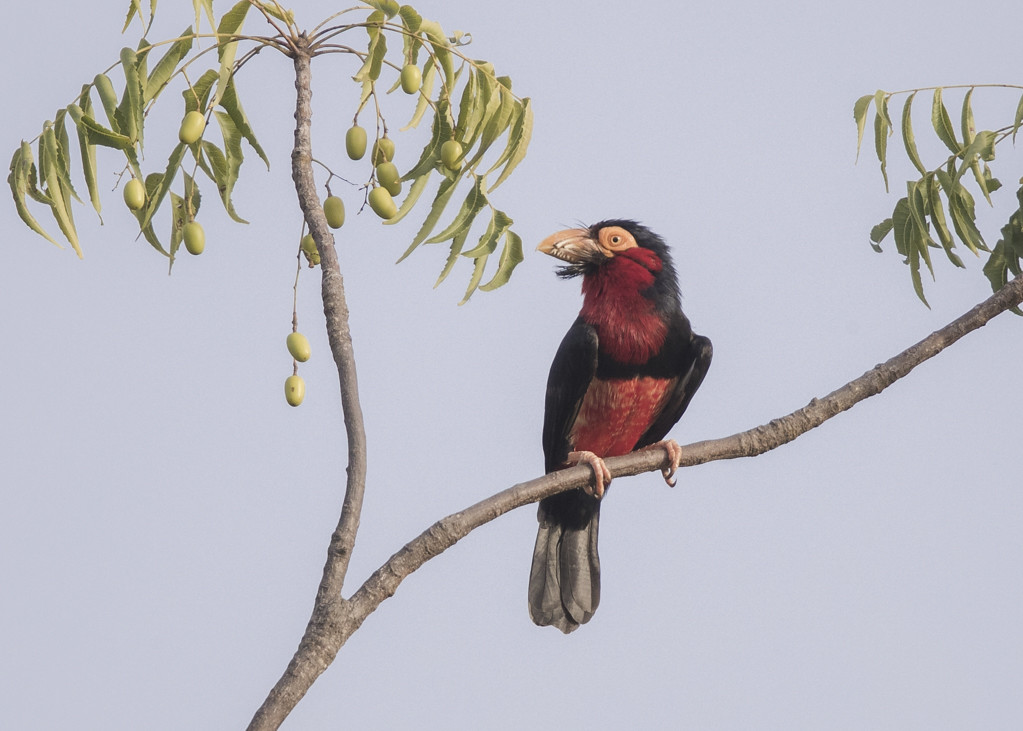
Our guide told us we would getting better views for sure, it's a common bird.We never did as it happens!
We walked on to the hide. No room for tripod use but a handy window sill and a bench seat was more than adequate. A round concrete drinking pool has been built to attract the birds but anyone with any photographic experience would soon point out that it's facing directly in to the sun for most of the day. The pool itself was a mess of bits of branch and stones dropped in the last of the evaporating water. Pretty dire really.
The good news was that there were a lot of birds visiting. This place had potential, that's for sure.
Black-rumped Waxbill.
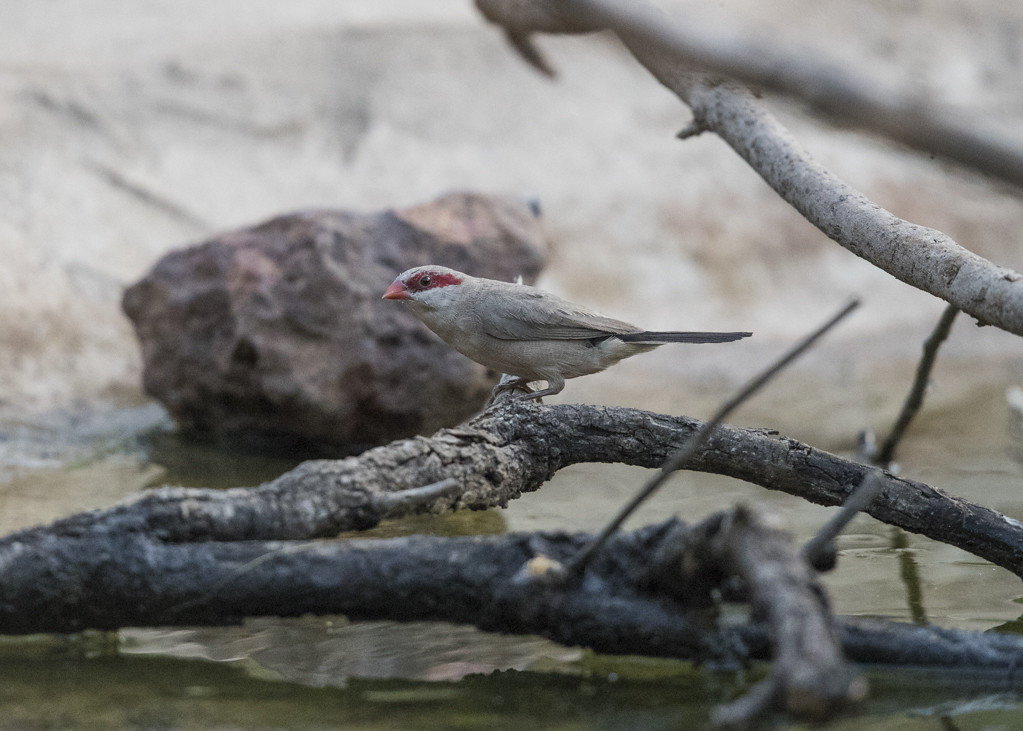
Just needed a bit of a clean up.
Grey-headed Sparrow.
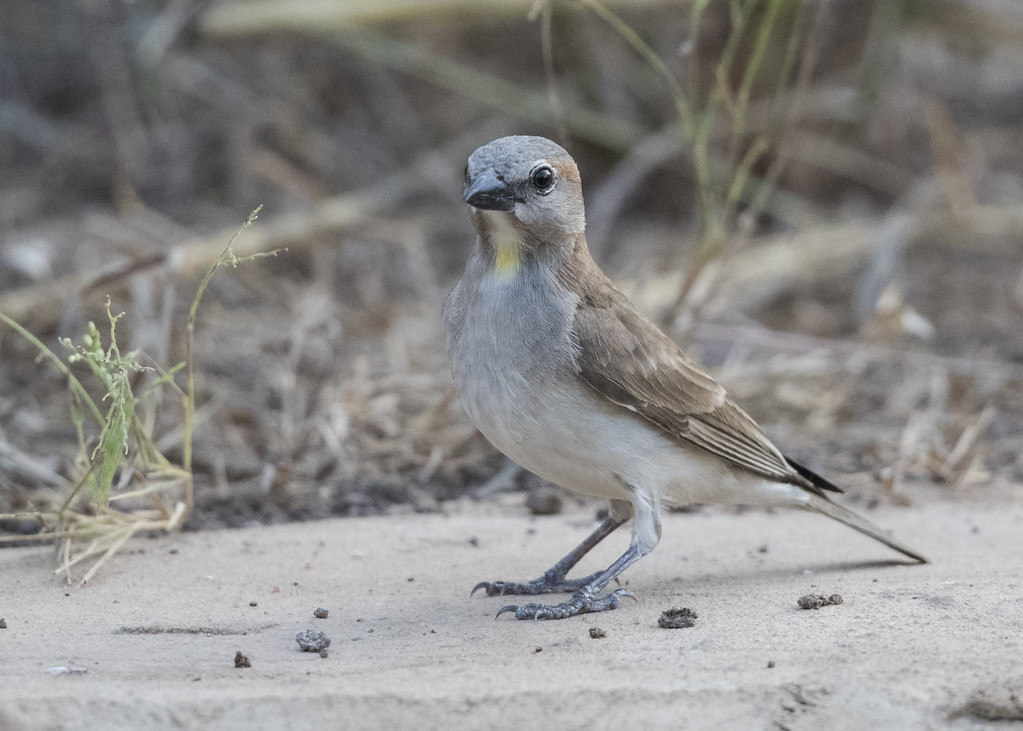
I would come back and see what I could sort out besides having the birds on the concrete perimeter of the pond.
Black-billed Wood Dove.
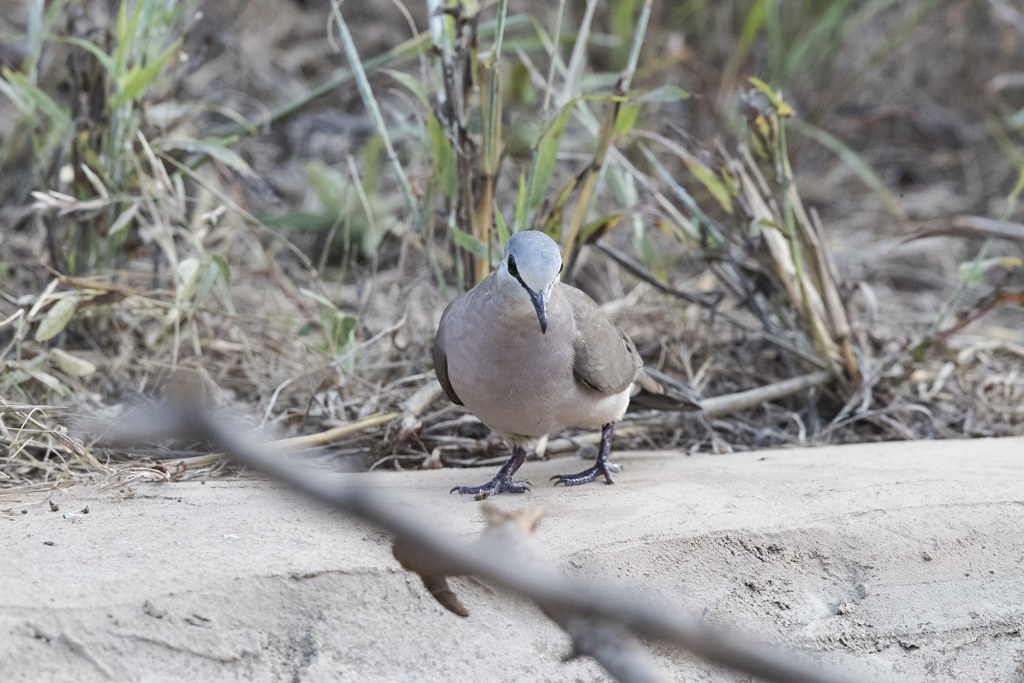
All that rubbish in the middle would have to go too, it was getting in the way.
I just hoped that this little beauty would make a return visit then. The Red-winged Pytillia was a lifer for me, Alan too. Best bird of the day as far as I was concerned.
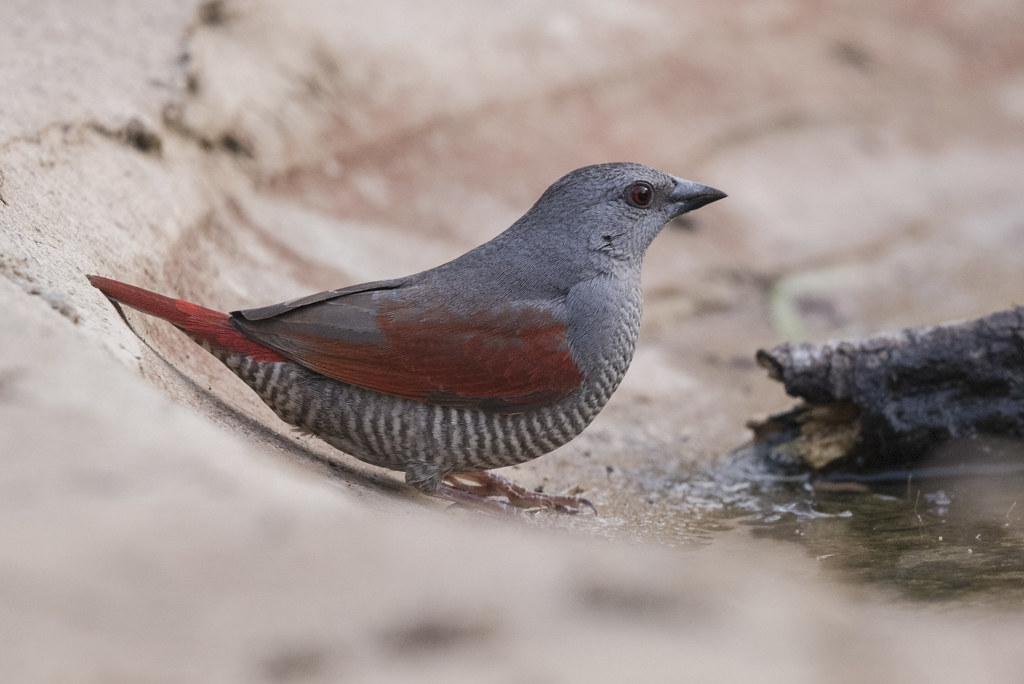
With the light fading it was time to retreat to camp.
Never mind the conditions in camp, we had our first boat trip to look forward to in the morning!
TBC.
No comments:
Post a Comment